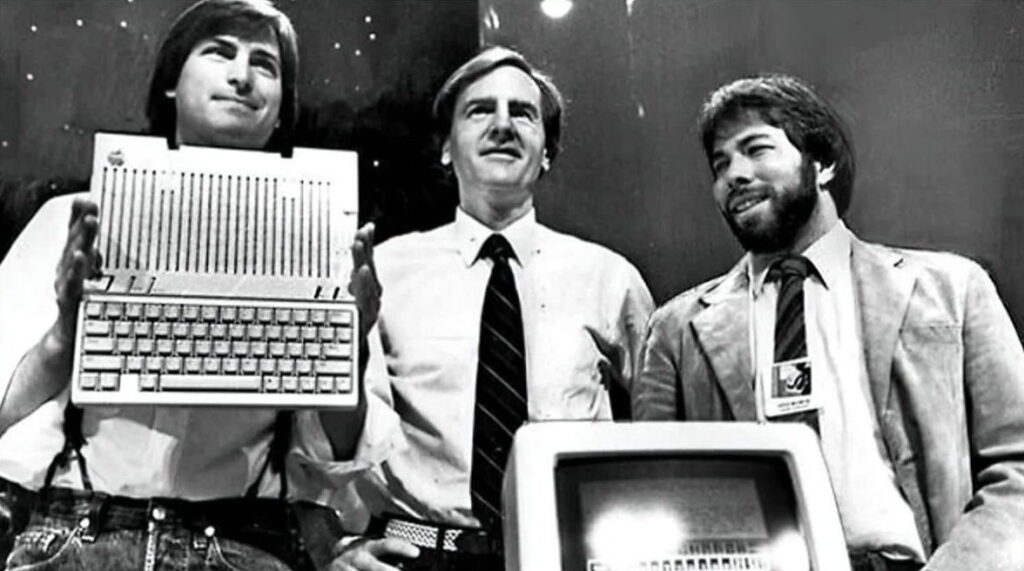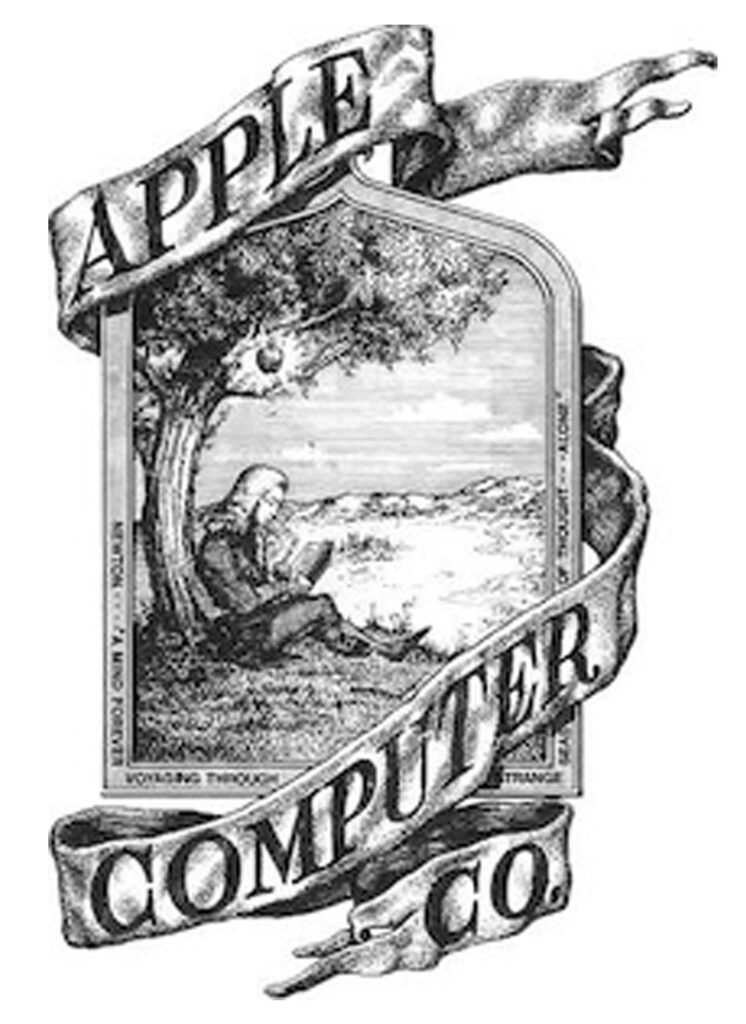Steve Jobs: The Visionary Who Revolutionized Technology and Shaped the Future of Apple

Steve Jobs Steve Jobs, the co-founder of Apple Inc., was an enterprising and genius innovator whose life does not cease to inspire millions. The path was difficult and met with considerable resistance, but his amazing journey changed the technology industry forever in ways that would impact computing for all eternity. This biography is about his early life, career tricks, founding of Apple Inc., new flotes and challenges faced in it.

Early Life
Born on February 24, 1955, to Joanne Schieble and Abdulfattah Jandali (both are now deceased) in San Francisco Cupertino; Steve Jobs was an American graduate student of the U.S with his father a Syrian-born professor. Born to unwed grad student Joanne Simpson and Syrian immigrant Abdulfattah “John” Jandali, Jobs was adopted as an infant by working-class couple Paul and Clara Jobs. At the encouragement of his adoptive parents, Waddell was curious from a very young age. In their garage, Paul a machinist taught him how to disassemble and re-assemble electronics which led Jobs aspired for technology.
Born in Mountain View, Calif., (before it was called Silicon Valley) Mr. Jobs grew up there and its environs as home to the greatest technology revolution of our time. He was always playing pranks and he also knew something about electronics, attended Homestead High School. It was there that Jobs met Steve Wozniak, an older student and electronics wunderkind who would become one of Jobs’s most important collaborators in tech.
Dropping Out of College
In the next years, Jobs enrolled at Reed College in Portland, Oregon. But after one semester he quit, deciding that the routine environment of college just wasn’t for him. Jobs had stopped being a student at that point but, because he was not actually paying to attend the classes and they were of such interest to him (and note the active verb) audited courses including — in his words “a course on calligraphy … which I found amazing. … It also happened to be designed by teachers who believed typography required artistry equivalent partners with science.”
In this time-frame however, Jobs also pursued other spiritual paths — he even sought the council of a master in Zen Buddhism. He said his 1974 trip to India seeking enlightenment influenced him significantly, helping form a minimalist philosophy and holistic view of life & business.
The Birth of Apple
Jobs co-founded Apple Computer in 1976, with Wozniak and Wayne. The three wanted to simplify how computers could be not only more accessible but also user-friendly. Wozniak designed the company’s first product, Apple I. Through a mix of charm and hyperbole, Jobs managed to talk the Byte Shop — one of the only computer stores in Mountain View at that time — into buying 50 completed machines. The devices were priced at $666.66 each, and the Apple I set the stage for countless innovations to come.
True breakthrough did come with the launching of Apple II in 1977. The Apple II was one of the first successful mass-produced microcomputer products, with color graphics and a junction-based design that made it hospitable to third-party software developers. The combination of Jobs’ design sensibilities and Wozniak’s engineering acumen made the Apple II a smash success, launching the company to prominence. In 1980, Apple went public and Jobs became a millionaire just shy of his 25th birthday.
The Arrival of the Macintosh
Jobs saw an opportunity in this trend as Apple grew, And he sought to design a computer that was so accessible even the individual consumer could buy one. An example of the latter was realized in 1984, when Macintosh became the first mass-market personal computer with a graphical user interface and mouse. It used the famous “1984” television commercial directed by Ridley Scott, for Super Bowl broadcast to introduce the Mac as a revolutionary machine that would disrupt complacent computing.
The Macintosh, while innovative was ultimately hindered by a high price and lack of software. But he butted heads internally, clashing with then-CEO John Sculley and other executives. Those disagreements eventually turned into a battle for control and Jobs was fired from Apple in 1985.

Reinventing — NeXT to Pixar
Jobs left Apple and founded NeXT, a high-end computer platform development company specializing in the higher-education industry as well as business markets. While NeXT computers were sophisticated and attractive, they also had a drawback of being quite expensive to the customers — with that element triggering their commercial failure. However NeXT’s software and technologies would be used by Apple in the future.
Jobs bought The Graphics Group in 1986 for $10 million from filmmaker George Lucas and descended to name it Pixar. He was a pioneer in computer animation and helped transform Pixar into the studio that it is today. Its first feature film, Toy Story (1995), was a commercial and critical success and is regarded as the first-ever computer-animated feature film. This soon brought them so much success that Pixar was bought by The Walt Disney Company in 2006 — a move which ensured Jobs enough stake to become the largest individual shareholder at Mickey’s House.
The Return to Apple
After Jobs left, Apple faced a range of product missteps and lost market share. Apple acquired NeXT in 1996 for $429 million, and went on to bring Jobs back as an advisor. Fifteen years later, by 1997 he was back as interim CEO and soon took the drastic steps to narrow Apple’s product line, revamp it all over again.
When he rejoined, Jobs’ first line of work was the iMac that made its introduction on 1998. They were slick, often translucent in a variety of colors, and noticeably consumer-friendly; the iMac was really what marked the start of Apple’s turnaround. The product was a very big success the unit sold almost 800,000 units in its first five months of selling.
Origin of the iPod, iPhone and iPad
Afterward, Jobs targeted a device to act as the “digital hub” of peoples digital lives — which lead him and Apple to developing some revolutionary products. AppleBag August 2001 – Apple introduces iPod portable music player: “1000 songs in your pocket.” The iPod was a groundbreaking device that transformed the music industry, and formed the tech ‘DNA’ upon which Apple would build its future mobile products. With iTunes came associated software for the Mac (and later Windows), which in turn helped users arrange their music libraries and buy more tunes — before long, Apple was selling tracks themselves via 2003’s debut of the iTunes Store, changing up how we bought our jams.
The iPhone, introduced in 2007 was the next great product. The iPhone featured a completely new user interface design under the direction of Apple’s CEO Steve Jobs, and he even went on to call it “revolutionary” Combination mobile phone, iPod (an existing product), and internet communication device. It proved to be a huge hit and effectively propelled Apple into position as the major driving force behind mobile technology.
After the iPhone, Jobs introduced a tablet computer10, then moved between laptops and smartphones. So too was the iPad, reinforcing Apple’s position as a top consumer electronics company.
design philosophy and leadership style
Jobs was a notorious perfectionist, with free reign to micromanage every aspect of design and ease-of-use. He was fond of underscoring simplicity, elegance and product design that worked in concert with the rest of Apple’s offerings, famously saying “Design is not just what it looks like and feels like. Design is how it works.” This philosophy — that they [the public] don’t know what they want until you give it to them, but once you have given it to them, they will forget life before without your solution also became the bedrock of Apple’s fortune.
The way he led his staff was both, tough and they said sometimes it felt to them as though God Himself told him a goal… Some thought what he expected of the people who worked for himself. Although some criticized his style, others took inspiration from it and cited it as one of the reasons for Apple’s more significant innovations. Apple employees referred to Jobs’ ability to convince both himself and others of truly unbelievable goals as his “reality distortion field”.
Ramped Health Battle And Then Resignation
Jobs was diagnosed in 2003 with a rare form of pancreatic cancer. He eventually had surgery in 2004 after first trying alternative treatments. Nevertheless, he returned to the helm of Apple and things soon started moving again with more new products being introduced but his leave for medical reasons became increasingly cenozoic.
Jobs stepped down as CEO in August 2011, admitting that he could no longer fulfill the duties of his position. He later suggested the company’s then-Chief Operating Officer Tim Cook take his place. Jobs stayed on as Chairman of the Board until his death at just 56 years old on October,5th,2011 — a legacy which persists.
Legacy and Impact
Steve Jobs had a massive impact and legacy that extended far beyond Apple, or even tech. He redefined personal technology, making the modern smartphone accessible to everyone by focusing on simplicity and design. During his tenure in charge, Apple rallied back into fortune with groundbreaking products that not only rescued the company from likely demise but did also revolutionize established industries such as computing, music and film while ruling telecommunications arena.
Jobs aesthetic sensibilities and insistence on the user experience has helped shape dozens of technology companies as far as building a product that works well — but also is nice to look at. Smartphone Era: Smartphones were ushered in with the introduction of Apple’s iPhone, altering global communication and lifestyle. The iPod altered the music-listening experience for everyone, and Pixar upended animation.
This legacy continues to inspire thousands of entrepreneurs and technology enthusiasts. It is a model for the “never-say-die spirit of an entrepreneur who built his way to a billion-dollar fortune after being ousted from his own company. He also left a philanthropic legacy with his initiatives including gifting stock options to charity and investing in medical research.
The Influence on Apple Today
Apple would go on to thrive in the post-Jobs era with Tim Cook at the helm, and even manage to expand their delightful product range beyond traditional Apple hardware like Macbook’s, iPhone 12’s etc. introducing us all eagerly awaited new toys such as; The Air Pods Pro (Retina sound that doesn’t skip) or watchOS7′(The Watch now sleeps)! That vision, set out by Jobs created the foundation upon which Apple built towards becoming not just a trillion-dollar company in 2018, but also reaching $2tn last year.
Jobs’ design ethos is still evident in everything Apple creates with simplicity, elegance and the seamless integration of products + services. To this day, the culture of unending innovation and reaching for new heights continues in the DNA at Apple.
Indeed, Steve Jobs did not fall as an entrepreneur but a leader that shaped several industries with some which include the music industry to mention few thing said about this Legend of all time. His story ranges from co-founding Apple in his parents’ garage to building it into one of the most valuable companies in the world, and is an example of passion, invention and triumph over adversity. His desire technological innovation to be ‘simple’ and that the form factor, was fully integrated with creating more stylish technology has not only shaped our devices but also people’s lives in building a beautiful new world together by community.
He said that Steve Jobs life was a great repercussion to impart all of us the philosophy behind never say die spirit and an undying quest for quality along with daring thinking. Nearly a decade since his passing, it’s clear the world of tech is still feeling Steve Jobs’ presence — and that while he may be gone in person, his spirit persists.
check our other Blogs/ Articles.







